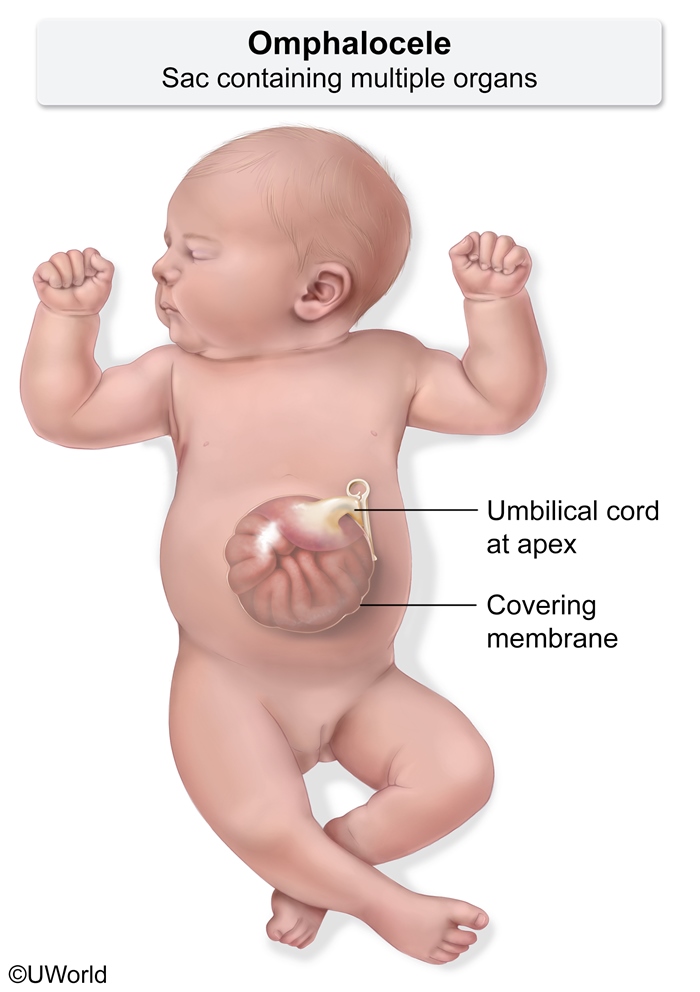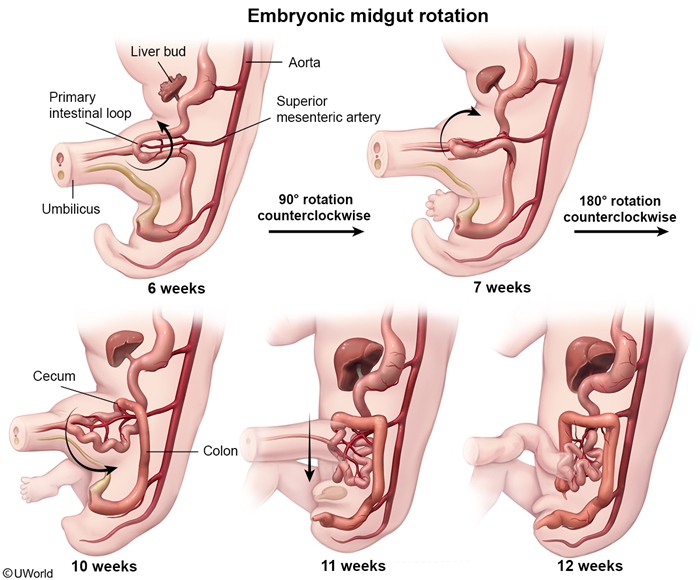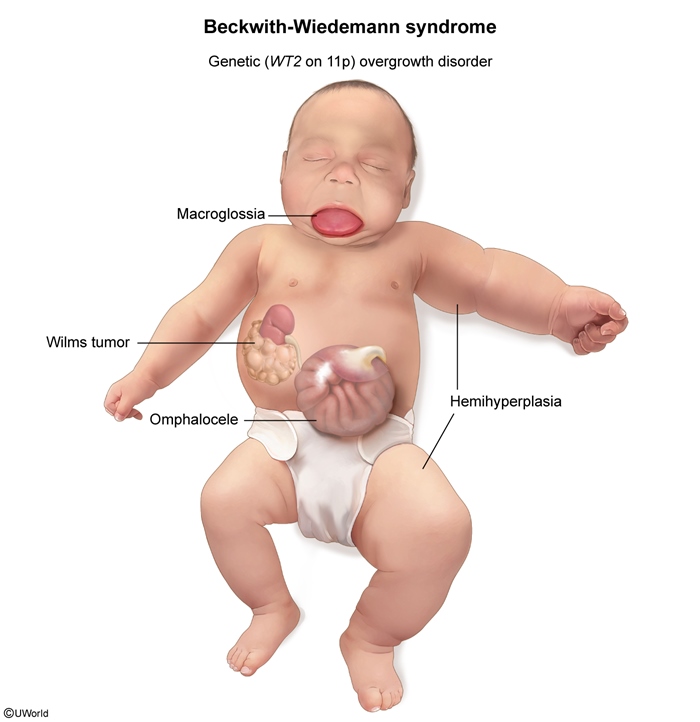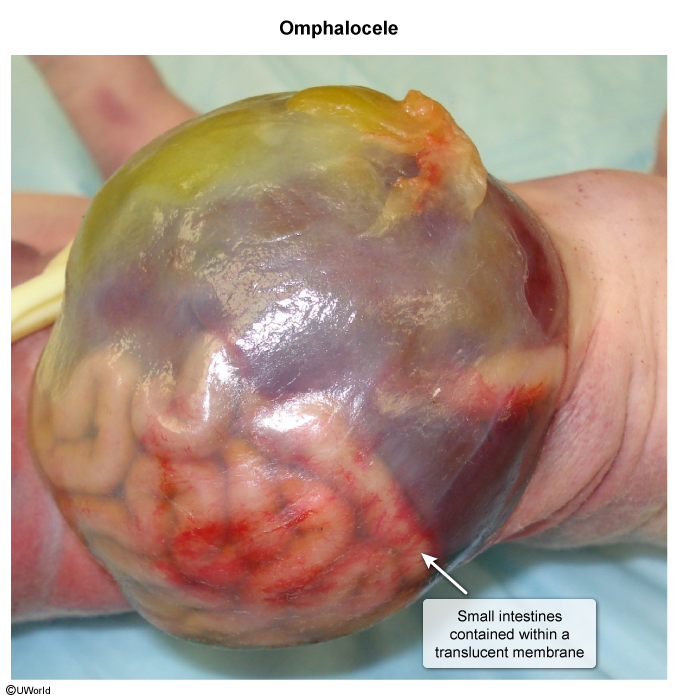Omphalocele
Article Sections
Introduction
An omphalocele is a congenital abdominal wall defect characterized by herniation of abdominal viscera through an opening at the base of the umbilical cord; the herniated viscera is contained within a membranous sac with the umbilical cord at the apex (Figure 1).
Pathophysiology and risk factors
At 4-8 weeks gestation, the midgut normally herniates through the umbilical ring because the embryonic abdominal cavity cannot accommodate rapid growth (Figure 2). The midgut then rotates counterclockwise before returning to the abdominal cavity by 12 weeks gestation.
Omphaloceles occur when the midgut fails to return to the abdominal cavity, resulting in abdominal viscera contained within a membranous sac composed of peritoneum and amnion at the umbilicus.
Omphaloceles have been associated with maternal risk factors, including extremes of maternal age (age >40 or <20), smoking, alcohol use, and obesity.
Continue Learning with UWorld
Get the full Omphalocele article plus rich visuals, real-world cases, and in-depth insights from medical experts, all available through the UWorld Medical Library.
Figures



Images
